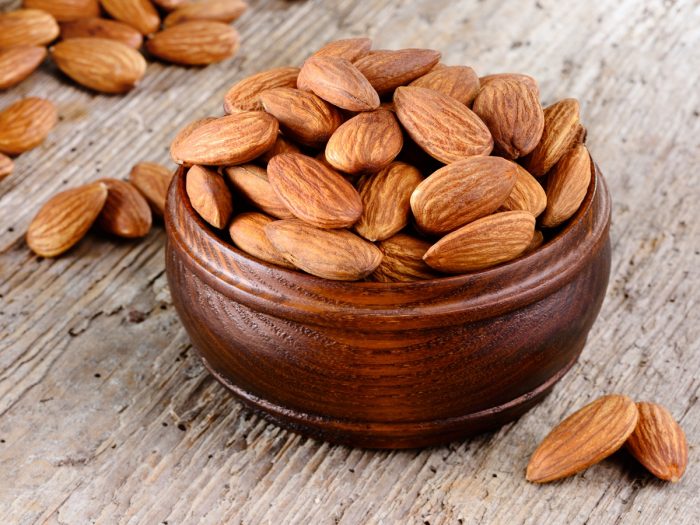If you haven’t added bitter almonds to your regular diet, you are missing out on a healthy and delicious snack that can provide a number of surprising health benefits.
What are Bitter Almonds?
Bitter almonds are the seeds of certain trees belonging to Prunus dulcis, namely those that grow in the Middle East and Asia. These seeds are often classified as nuts, but they aren’t true nuts and are actually a form of a drupe, where the seed is enclosed in an outer hull and a hard shell. While there are various types of almonds, bitter almonds are among the two most common, along with sweet almonds. Bitter almonds tend to be more useful in cooking oils and in culinary preparations, versus the common snack food that sweet almonds often represent. [1]
Interestingly enough, raw bitter almonds contain certain toxins that can be lethal to humans, even in small doses. If you eat 7-10 bitter almonds that haven’t been processed (heated, boiled, baked etc.), you will consume a toxic level of hydrocyanic acid. For this reason, the raw form of bitter almonds is prohibited in certain countries, including the United States. Once a bitter almond is treated, however, the hydrocyanic acid is removed or neutralized, making these almonds safe to use in culinary applications. [2]

A bowl of rich brown almonds. Photo Credit: Shutterstock
Difference between Sweet Almonds & Bitter Almonds
Most people are familiar with sweet almonds, as these are the almonds you find in most desserts and nut mixes. Sweet almonds are far more common since non-sweet almonds are only produced in those trees which have a recessive gene. That single gene produces the bitter flavor. Sweet almonds are still commonly roasted or baked, similar to bitter almonds, but this isn’t necessary to protect against cyanide toxicity. Bitter almonds can have more than 40 times the hydrocyanic acid that non-sweet almonds possess. [3]
In terms of appearance, sweet almonds and bitter almonds are quite similar, both having brown skin and a white interior. However, bitter almonds tend to be slightly smaller and more of a point. Their flavor is the most distinguishing characteristic, however, and will be apparent if you eat a single nut. Due to the many unsaturated fats found in each bitter almond, they tend to have a shorter shelf life than sweet almonds. Therefore, any bitter almonds or products derived from them should be stored in airtight containers and kept away from direct sunlight, heat or excess moisture.
Bitter Almond Uses
When people think of using almonds, they are typically thinking of sweet almonds, but a bitter almond also has a number of uses. After heating these almonds in various ways, you can extract the essential oils from these nuts, which is a very good cooking oil, as it tends to have a stronger almond flavor than sweet almonds. [4]
Medicinally speaking, bitter almond and its extracts were used for the treatment of spasms, respiratory distress, inflammation, and localized pain, both topically and internally consumed. In the past, unprocessed bitter almond has been used for certain health conditions, but due to the high risk of toxicity, this is no longer recommended. [5]
Almonds of the bitter variety are also used in the production of certain cosmetic products, such as soaps, conditioners, and lotions. This type of almond is preferred both for its smell and high concentration of active ingredients that can help reduce inflammation and beautify the skin.
